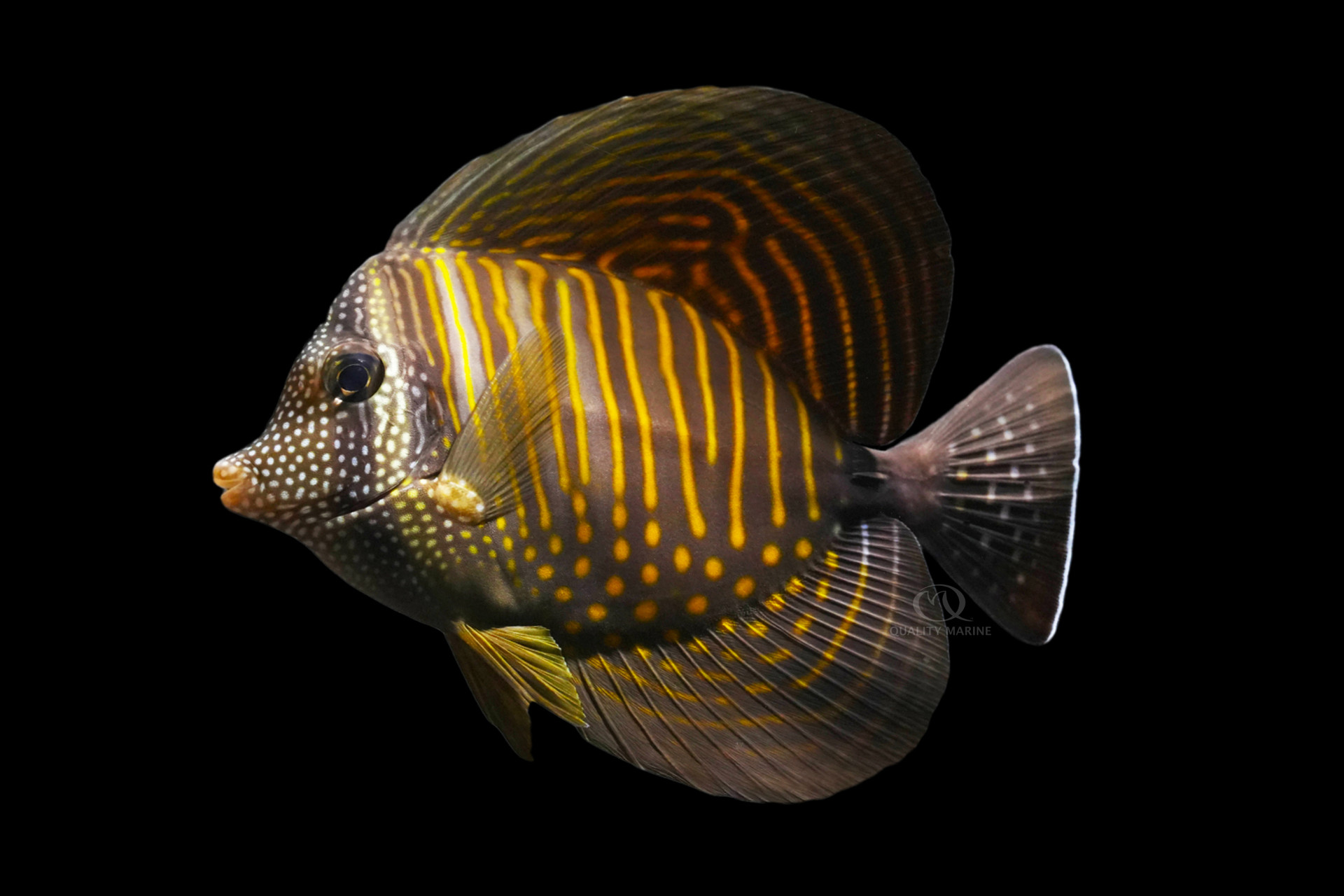The Red Sea or Desjardinii Stunner

The Desjardinii Sailfin Tang (Zebrasoma desjardinii) is a member of the family Acanthuridae, better known as the tangs or surgeonfishes, which are both references to sharp spines on both sides of their caudal peduncle, the part of the fish that connects the tail to the body. It is difficult to describe the beautiful colors and unpredicable patterns of this large tang. They vary widely, but generally are a white, gray, black ombre with yellow stripes on the body, white spots on the face and sometimes blue on the caudal/tail fin and the peduncle, mentioned earlier.
Native to the Red Sea and Indian ocean, these fish are mostly found in the Western Indian Ocean. The Desjardiniis start life out in shallow, protected water such as lagoons, as such, they are used to high light habitats like shallow water coral heads surrounded by sand and algae. As they get older they venture into deeper water, but still stay near reef edges and deeper slopes.
In the wild, Desjardinii Tangs reaching can reach 16 inches long, and since they are a very active fish, a large aquarium is of the utmost importance when considering the long term needs of Zebrasoma desjardinii; a footprint of eight by two feet would be a good starting point for an adult Sailfin Tang. When starting with a juvenile, a 110 or 125 gallon aquarium could be considered for growout, Open swimming space and some current for exercise are important. A reef aquarium with a lot of flow and open swimming space is a good setup for a sailfin tang. They, like most tangs, are likely to aggressive with similarly shaped fish, such as other tangs from the genus Zebrasoma.
Desjardinii Tangs are voracious eaters, and are primarily herbivorous, but will appreciate, relish, and need meaty foods of appropriate size such as mysis. They naturally consume small invertebrates in the wild while grazing through algae. A healthy tang should feed almost constantly if given the ability to graze as they would in nature. They usually learn to accept a high quality pellet in short order which makes very frequent feedings much more convenient.
The Desjardinii Sailfin Tang is not being spawned in captivity. Due to its large size, and territorial nature, it most likely could be done, but it would have to be in a public aquaria setting where a massive aquarium could create the proper environment and setting. Like other Zebrasoma Tangs, there would be a long larval period where the “baby fish” would drift freely in the water and feed on other microscopic phyto and zooplanktons.
The beautiful colors and markings of the Desjardinii Tang are hard to beat or compare to any other fish in the aquarium world. Their engaging nature and gorgeous fin flaring activity have few aesthetic equals in aquarium fish. If you are searching for a large, active tang, this might be the fish for you. Call your local fish store and ask them for a sustainably sourced Desjardinii Tang from Quality Marine today!!